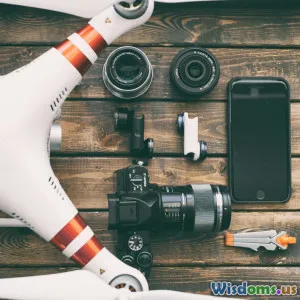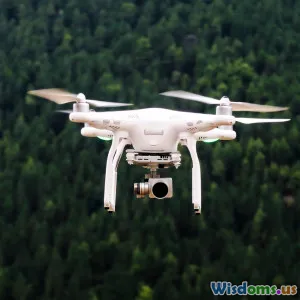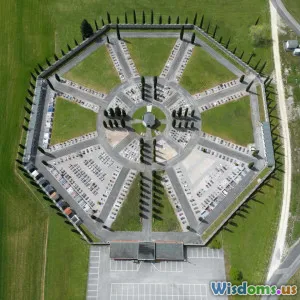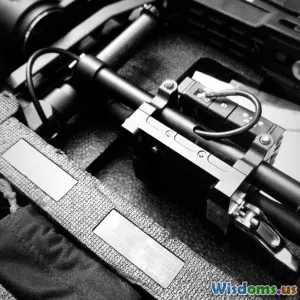
Inside the Secret Training of AI Drone Pilots Today
9 min read Explore the covert world and cutting-edge methods behind training AI drone pilots shaping tomorrow’s aerial missions. (0 Reviews)
Inside the Secret Training of AI Drone Pilots Today
Drones once fluttered solely under human command, but a new era has arrived. Today, artificial intelligence pilots drones through complex missions that require split-second decisions, collaboration, and adaptability normally reserved for human operators. Behind this technological leap lies a secretive, sophisticated training process designed not for flesh and blood trainees but for machine minds. What goes into preparing AI systems to pilot autonomous drones safely, efficiently, and ethically in increasingly complicated environments?
In this article, we peel back the curtain to examine the deeply technical and surprisingly creative world of training AI drone pilots. From virtual renderings simulating hostile territories to integrating moral frameworks in code, the hidden process is a fascinating convergence of computer science, aerospace engineering, and ethics.
The Rise of AI Piloted Drones: Necessity Behind the Secrecy
The military, disaster relief organizations, and commercial entities alike are investing billions in autonomous drone technology. The benefits are staggering: enhanced surveillance with reduced human risk, rapid delivery of medical supplies, monitoring disaster zones in inaccessible regions, and performing complex agricultural monitoring. However, operating in uncontrolled airspaces fraught with unpredictable scenarios demands a highly advanced intelligence beyond standard pre-programmed maneuvers.
Training AI drones is sensitive because it involves national security, proprietary technology, and unprecedented ethical questions. “When autonomous systems make life-and-death calls,” explains Dr. Sienna Torres, AI ethics consultant, “we must ensure their training doesn’t just optimize mission success but respects human values and legal boundaries.” Such stakes drive governments and companies to classify training protocols and sometimes run them behind military-style secrecy.
Phase 1: Immersive Simulation Environments
AI drone pilots begin their journey not in the skies but within expansive simulated environments that test every conceivable factor.
Hyper-Realistic Virtual Worlds
Using what some call “digital sandboxes,” developers simulate sprawling cities, dense forests, adversarial drone behaviors, weather fluctuations, and variable electronic interferences. Modern physics engines render realistic responses to wind shear and obstacle avoidance challenges.
An example is the U.S. Air Force’s Skyborg program’s use of synthetic battlespace simulations. These software ecosystems allow AI pilots to gain experience in thousands of virtual sorties without costly live drills or risk.
Reinforcement Learning in Action
Reinforcement learning algorithms enable AI drones to “learn by doing” within these environments. The drone receives feedback rewards for desired behaviors, such as completing reconnaissance without detection or making emergency landings during mechanical failure.
The AI iteratively hones decision-making skills through millions of rehearsals, far beyond a human pilot’s training capacity. OpenAI’s early successes with drone navigation pave the way for such techniques, demonstrating how machines can autonomously navigate complex mazes.
Phase 2: Ethical and Legal Framework Integration
Unlike a human pilot who undergoes years of training on legal use of force and ethical conduct, AI drone pilots require explicit programming to prevent unintended harms.
Embedding Moral Algorithms
Ethics engineers design layered decision-making criteria embedding international humanitarian law, rules of engagement, and civilian safety prioritization. For instance, an AI drone must learn to abort a mission if there is any risk of civilian casualties above an established threshold.
Research institutions like MIT’s Media Lab have collaborated with defense and civilian bodies to cultivate frameworks ensuring AI respects privacy, avoids unnecessary force, and adheres to proportional responses in combat zones.
Real-time Ethical Decision Modules
Recent developments include dynamic ethical frameworks within AI architectures that allow real-time mission adjustments. These modules evaluate data streams to weigh urgency against risk continuously and can override the drone pilot’s original commands.
This dynamic checks and balances system dramatically reduces the chances of malfunctions causing catastrophic outcomes and is a core reason AI pilot training is non-trivial and tightly controlled.
Phase 3: Field Data Integration and Collaborative Training
Simulations and ethical coding cannot replicate every variable the open skies present. Therefore, AI drone systems undergo rigorous training based on extensive real-world data.
Continuous Learning from Live Operations
Sensor data from real drone missions—weather patterns, electromagnetic interference occurrences, sudden obstacles—feed back into AI models for ongoing refinement.
Project Maven is a timely example where live reconnaissance data was used to improve AI recognition and action capabilities. Such continuous loop learning ensures AI adapts to evolving threats and environmental complexities beyond training sets.
Human-AI Team Exercises
The most advanced training setups integrate human pilots and AI as cooperative agents rather than competitors. Joint simulations focus on decision handover protocols, communication, and mission teamwork.
Lockheed Martin’s recent experimentation with manned-unmanned teaming uses supervised autonomy to prepare AI pilots for interacting fluidly with human teams, leveraging strengths of both.
Challenges and the Road Ahead
Despite remarkable progress, training AI drone pilots remains fraught with hurdles.
-
Verification and Validation: The opaque nature of neural networks raises trust issues. Ensuring an AI pilot behaves reliably across unpredictable scenarios demands exhaustive and ongoing testing.
-
Cybersecurity Risks: Autonomous drones controlled by AI are susceptible to hacking, requiring constant reinforcement of security protocols as part of training.
-
Regulatory and Public Acceptance: As AI systems take greater control, gaining regulatory approval and public trust hinges on transparent outcomes from training programs.
Efforts are underway worldwide to standardize training methods. NATO’s emerging guidelines on autonomous weapon systems advocate for transparency where possible and insist on human oversight mechanisms.
Conclusion: The Future of AI Drone Pilot Training
The secretive, intensive training of AI drone pilots today is a multidisciplinary endeavor sitting at the nexus of machine learning, aerospace science, ethics, and security. Far from simple programming, it demands creative solutions to enable machines to think, learn, and adapt like human pilots, but with arguably faster and broader capabilities.
These AI pilots will shape the future of aerial operations—saving human lives in combat zones, responding quicker in crises, and expanding exploration frontiers. Their training remains secretive for good reason: the delicate balance of power, safety, and ethics they embody is a treasure to protect.
As these horizons expand, the call for transparency, robust oversight, and continuous ethical evolution grows louder. The secret training programs today will become tomorrow’s benchmarks for trustworthy AI operation in the skies.
“AI doesn’t replace the pilot; it augments the mission,” says Captain Daniel Huang, a leading drone operator and AI integration specialist. “What we’re training is an evolution in partnership—not substitution.”
In understanding what lies behind the curtain, we glimpse a future where AI and human wisdom navigate challenges together, high above the ground, piloting into new domains of escape, agility, and safety.
References:
- U.S. Air Force Skyborg Program information releases
- MIT Media Lab AI Ethics Project insights
- Lockheed Martin human-autonomy teaming white papers
- OpenAI research on reinforcement learning and navigation
- NATO guidelines on autonomous weapons
- Interviews with AI Ethics experts and military drone operators
Rate the Post
User Reviews
Popular Posts



















